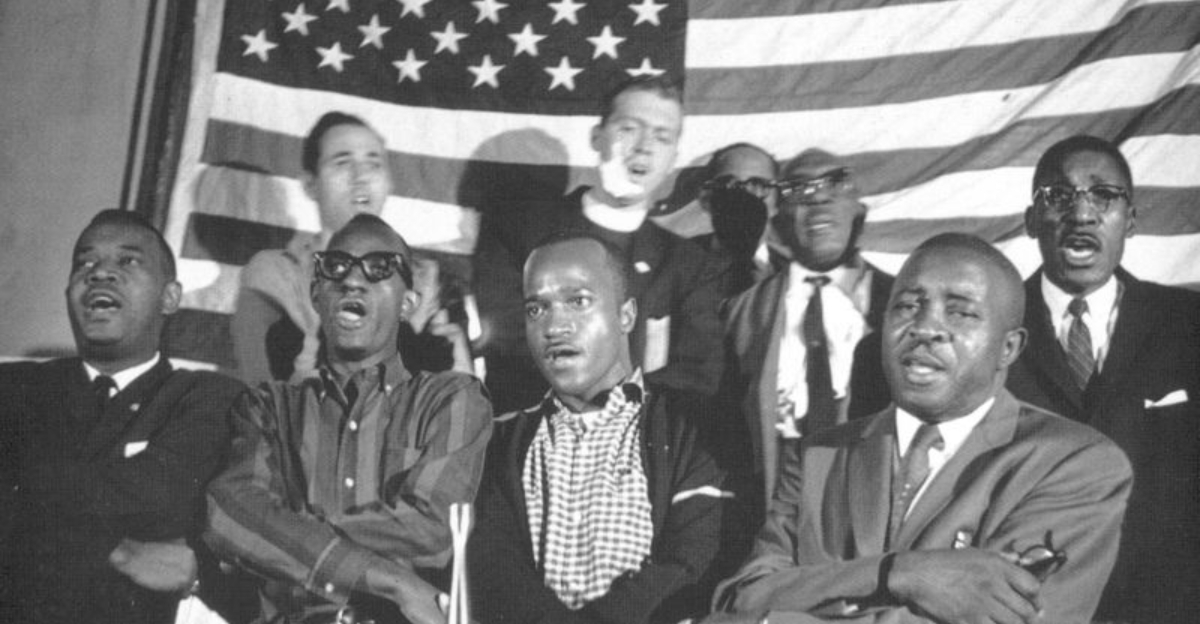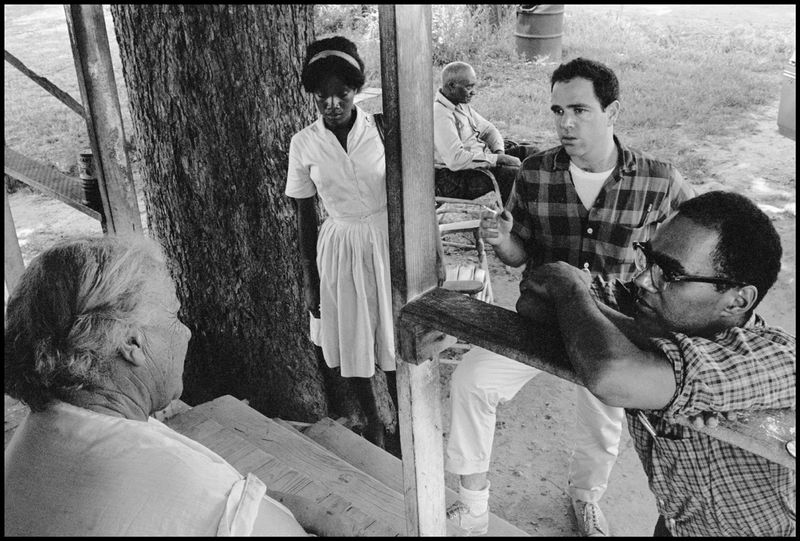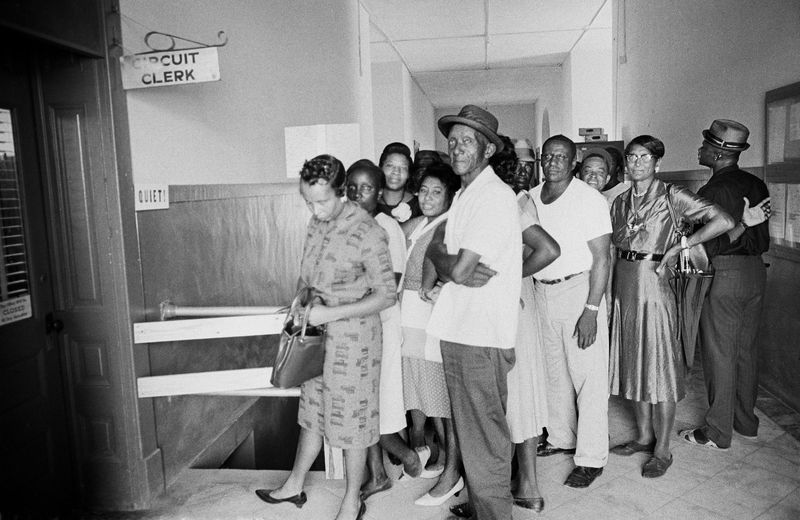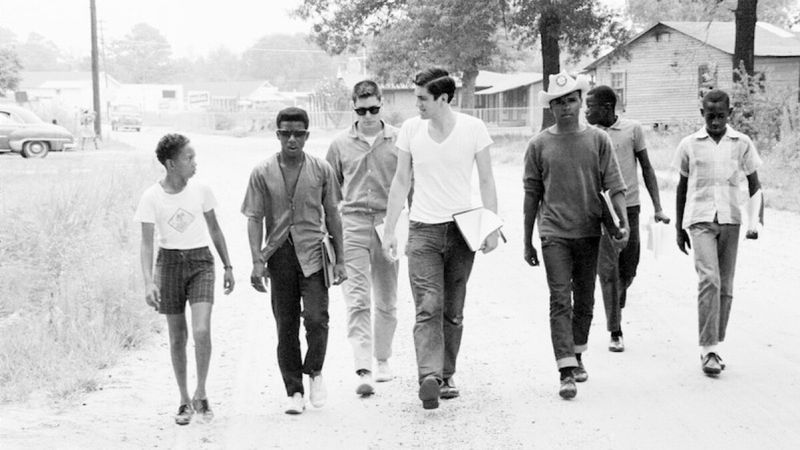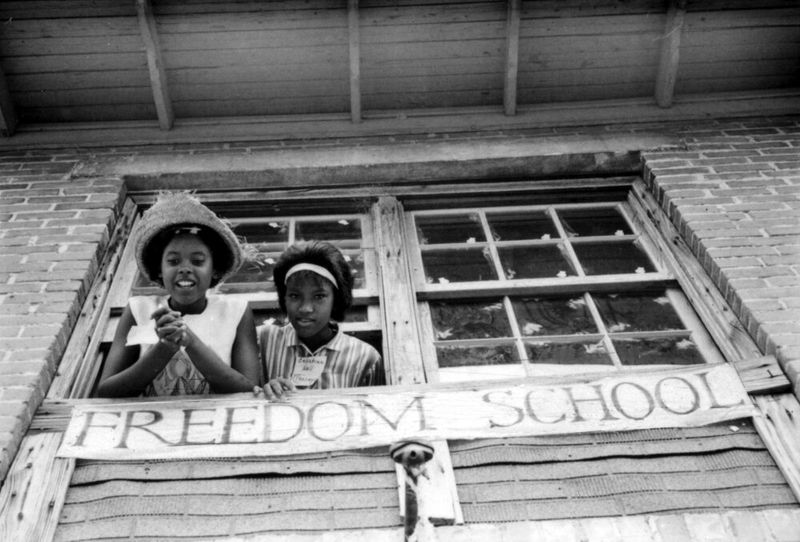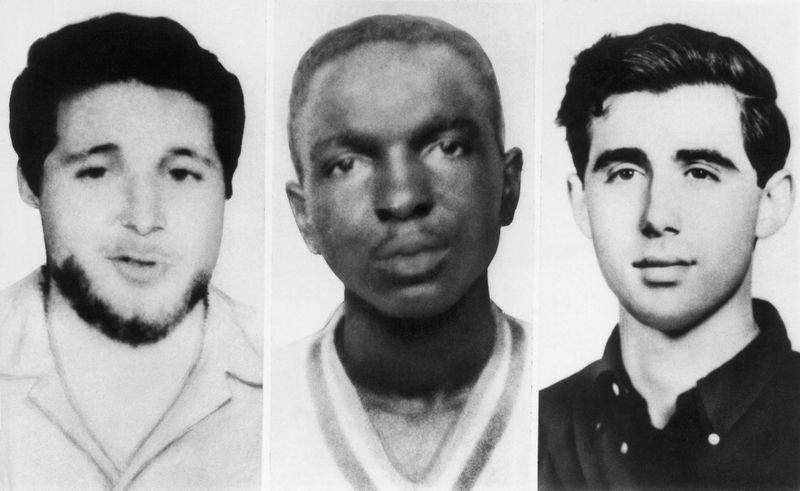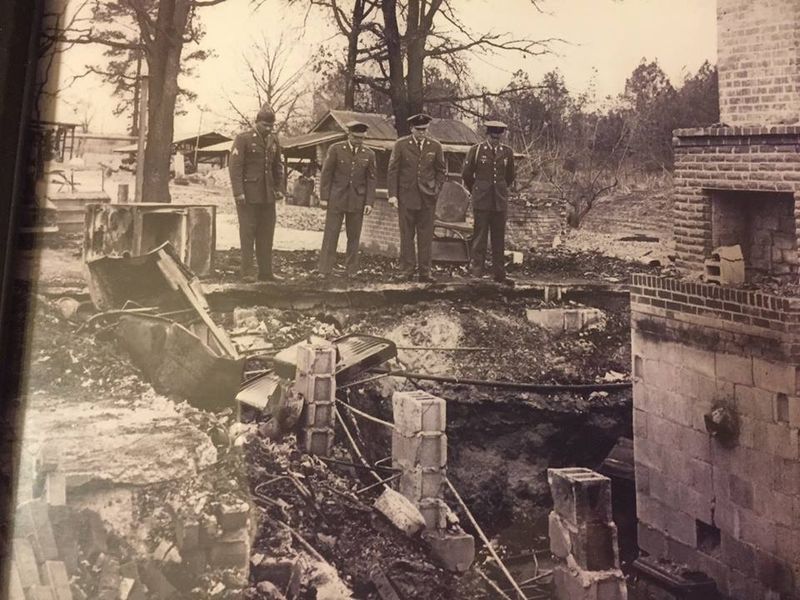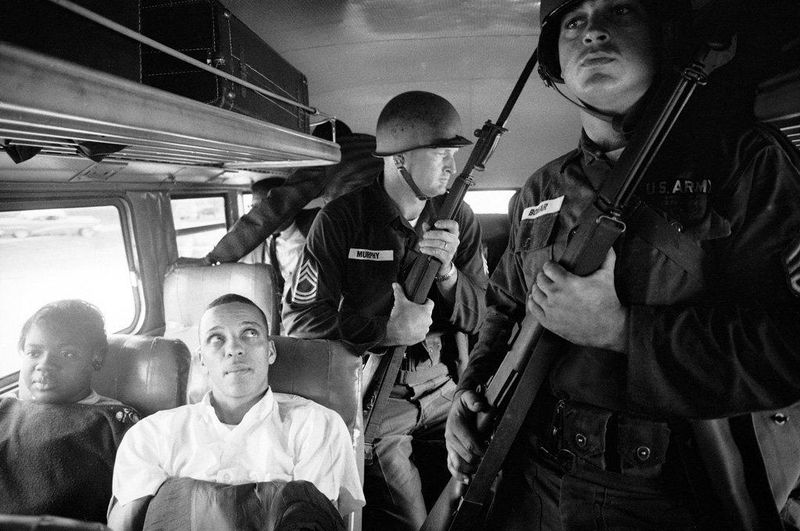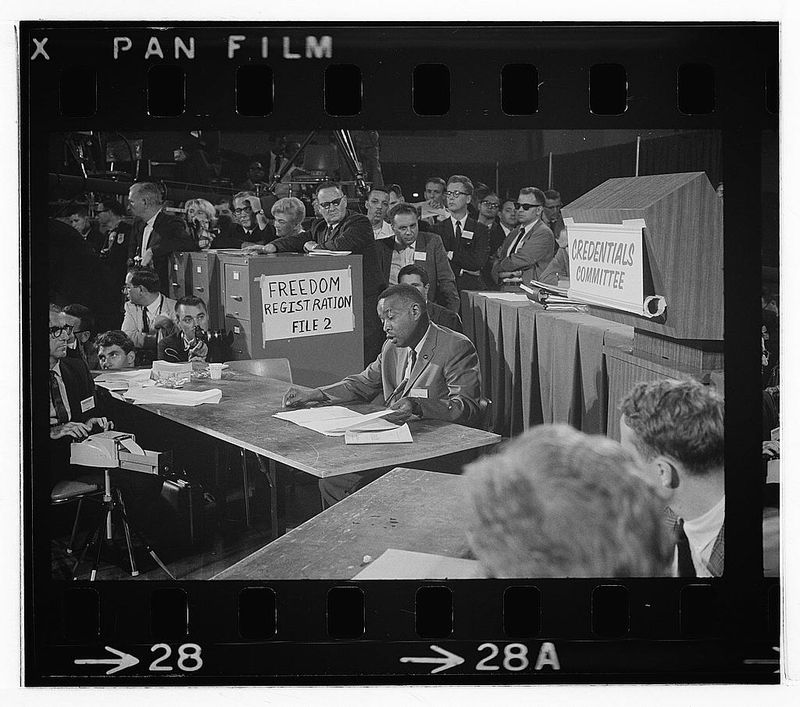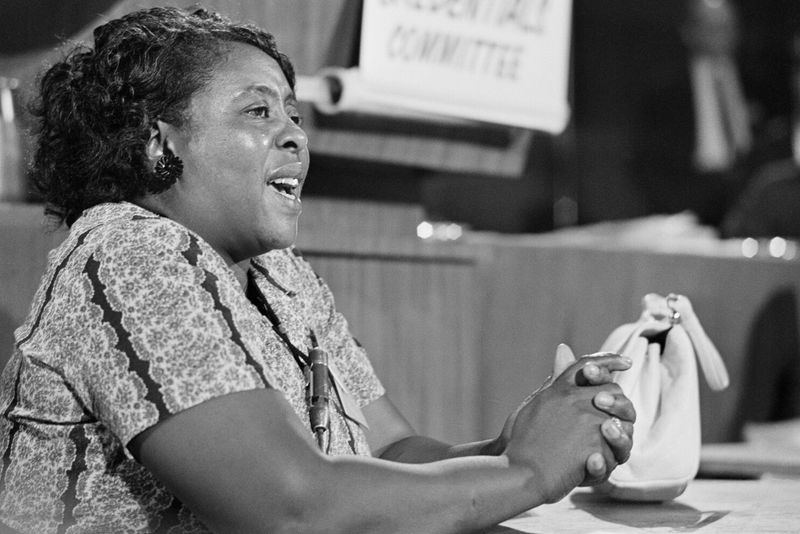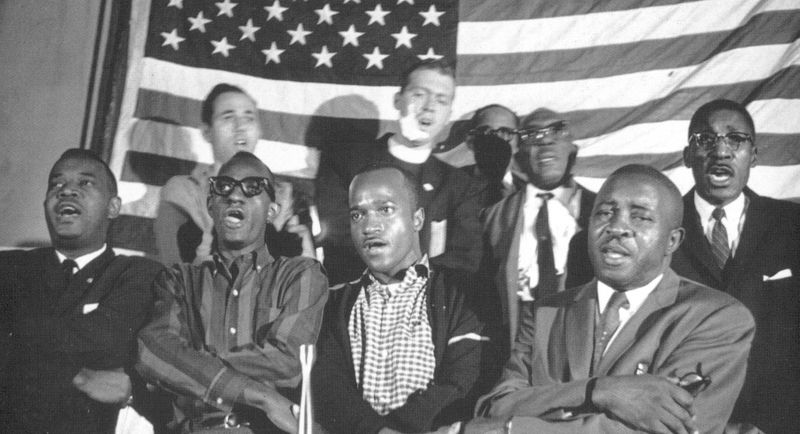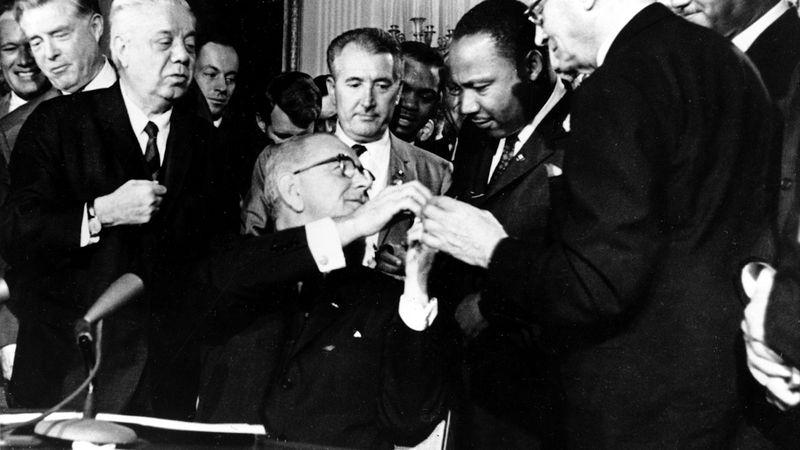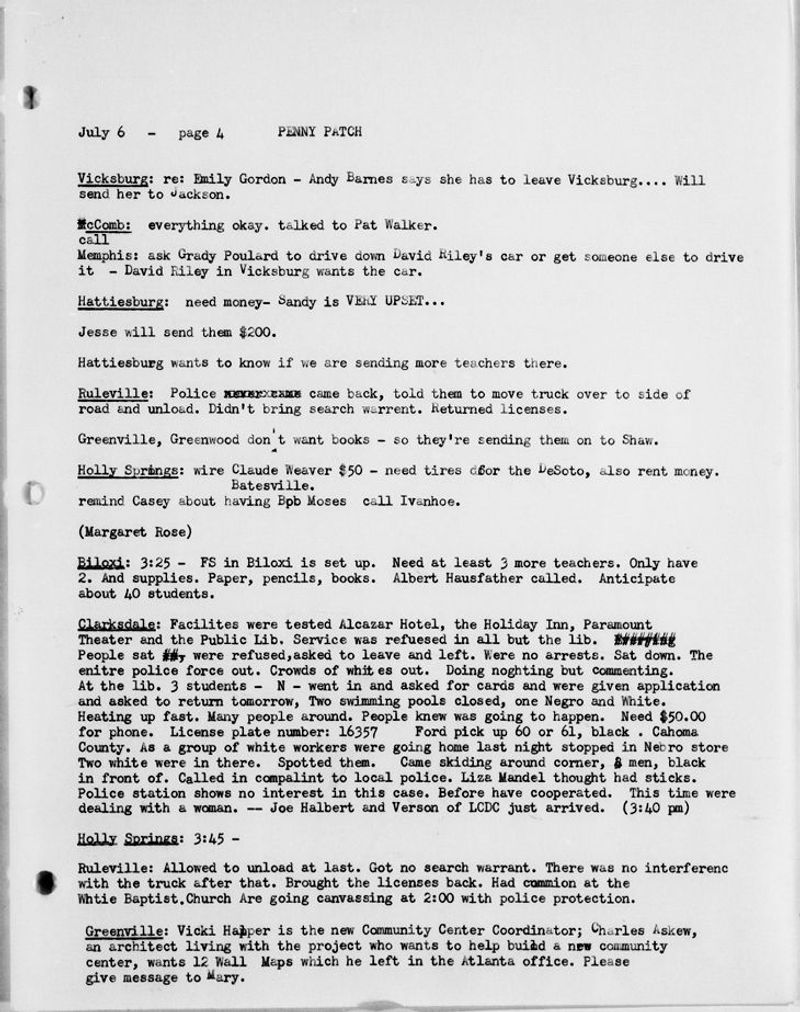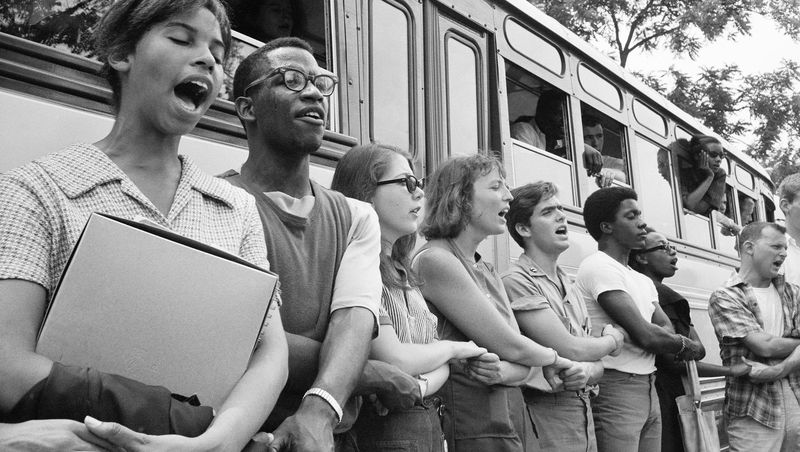In the summer of 1964, a bold movement for voting rights took place across Mississippi. College students from across America joined local Black activists to challenge racist voting laws that kept Black citizens from the polls. This dangerous but crucial campaign, known as Freedom Summer, became one of the most important chapters in America’s civil rights story.
1. The Student Nonviolent Coordinating Committee Led the Charge
Young activists from SNCC sparked the Freedom Summer campaign with determination and courage. They partnered with CORE (Congress of Racial Equality) and Mississippi residents who had been fighting for equality for years.
SNCC members like Bob Moses and John Lewis provided critical leadership, bringing organization to a dangerous mission. They recruited volunteers, planned strategy, and coordinated with local communities.
Many SNCC leaders were barely in their twenties, showing how youth can drive powerful social change. Their grassroots approach emphasized empowering local communities rather than imposing outside solutions.
2. Mississippi’s Brutal Voting Restrictions Targeted Black Citizens
Imagine trying to vote but facing impossible tests, expensive fees, and threats of violence. That was reality for Black Mississippians in 1964. Less than 7% could vote despite making up nearly half the state’s population.
County registrars used complicated literacy tests with impossible questions like “How many bubbles in a bar of soap?” White applicants rarely faced these obstacles.
Beyond official barriers, economic retaliation awaited those who attempted to register. Black citizens risked losing jobs, homes, and bank loans simply for trying to exercise their constitutional rights.
3. Over 1,000 Student Volunteers Risked Everything
College students from places like Yale, Stanford, and Michigan abandoned comfortable summer plans to join the dangerous civil rights battlefield. Most were white northerners experiencing southern segregation for the first time.
Before heading to Mississippi, volunteers underwent intensive training on nonviolence, voter registration procedures, and how to protect themselves. They learned to curl into protective positions during beatings.
Many parents begged their children not to go, knowing the dangers. Students wrote wills and final letters home before departing, understanding they might not return alive from what some called “the American Congo.”
4. Freedom Schools Provided Revolutionary Education
Makeshift classrooms in church basements and on front porches transformed into powerful centers of learning. Over 40 Freedom Schools opened across Mississippi, serving 2,500+ students who eagerly absorbed knowledge denied to them in segregated schools.
The curriculum went far beyond reading and math. Students studied Black history, political organizing, and leadership skills. They learned about African heritage, discussed current events, and debated solutions to community problems.
Teachers encouraged students to question authority and imagine a different future. This radical approach to education empowered young people to see themselves as agents of change in their communities.
5. Three Young Men Paid the Ultimate Price
James Chaney, Andrew Goodman, and Michael Schwerner vanished on June 21, 1964 – the first day of Freedom Summer. Their disappearance sent shockwaves through the movement and the nation.
The FBI launched a massive search operation, eventually discovering their bodies buried in an earthen dam 44 days later. The three had been detained by police, released into the hands of Klansmen, then shot and killed.
Chaney, a 21-year-old Black Mississippian, suffered the most brutal beating before death. Goodman and Schwerner, both white New Yorkers, received national attention that highlighted how Black deaths often went unnoticed by white America.
6. Violence and Terror Were Everyday Realities
Freedom Summer volunteers woke each day knowing violence could strike at any moment. More than 80 workers were beaten by white mobs or police. Over 1,000 participants were arrested on trumped-up charges.
The Ku Klux Klan and White Citizens’ Councils orchestrated campaigns of terror. They firebombed at least 30 Black churches and homes that housed volunteers. Some families who opened their doors to workers lost everything.
Phone lines constantly rang with death threats. Cars followed volunteers on dark country roads. This atmosphere of constant danger made simple acts like registering voters acts of tremendous courage.
7. Media Coverage Shocked the Nation’s Conscience
Television cameras captured scenes of brutality that Americans couldn’t ignore. Families watching evening news saw peaceful volunteers beaten in the streets, churches in flames, and grieving parents searching for missing children.
Northern newspapers sent reporters to cover the unfolding drama. Their front-page stories exposed the ugly reality of southern racism to millions who had previously turned a blind eye.
President Johnson monitored developments closely as public pressure mounted. The media spotlight forced federal authorities to take action, demonstrating how journalism can drive social change when it brings hidden injustices into public view.
8. The Mississippi Freedom Democratic Party Challenged the System
Excluded from the all-white Mississippi Democratic Party, activists created their own political organization. The MFDP held open meetings where Black citizens could participate freely in the political process for the first time.
They elected 68 delegates to attend the Democratic National Convention in Atlantic City. Their goal? Replace Mississippi’s official all-white delegation with their diverse, democratically chosen representatives.
The MFDP’s challenge forced national Democrats to confront the party’s tolerance of racism. Though offered only a symbolic compromise of two seats, their bold action laid groundwork for future reforms that would transform southern politics.
9. Fannie Lou Hamer’s Testimony Changed Hearts and Minds
A 44-year-old former sharecropper electrified the nation with her raw, powerful testimony before the Democratic National Convention. Fannie Lou Hamer described being brutally beaten in a Mississippi jail simply for trying to register to vote.
“Is this America?” she famously asked, her voice trembling with emotion but never breaking. “The land of the free and the home of the brave?” President Johnson was so alarmed by her effectiveness that he called an emergency press conference to interrupt television coverage.
Hamer’s unforgettable words revealed the human cost of racism to millions of Americans. Her courage and moral clarity made her the movement’s most compelling voice.
10. Local Mississippi Heroes Anchored the Movement
Behind every northern volunteer stood brave Mississippi residents who risked everything. Families opened homes to strangers, knowing they might face retaliation long after summer ended.
Local leaders like Amzie Moore, Victoria Gray, and E.W. Steptoe had been fighting for rights for decades. They provided crucial knowledge about local communities and conditions that outsiders couldn’t possibly have.
When Freedom Summer ended, these local heroes remained to continue the struggle. Their names may be less familiar than those of famous civil rights leaders, but their sustained courage over many years formed the backbone of Mississippi’s transformation.
11. Federal Voting Rights Legislation Followed the Struggle
Freedom Summer’s spotlight on voter suppression created momentum for landmark legislation. President Johnson and Congress could no longer ignore the brutal reality of disenfranchisement after the summer’s events captured national attention.
The Voting Rights Act of 1965 passed less than a year after Freedom Summer ended. This powerful law banned literacy tests, authorized federal examiners to register voters, and required certain states to get federal approval before changing voting procedures.
Black voter registration in Mississippi jumped from 7% to 67% within four years of the law’s passage. This dramatic change demonstrates how grassroots activism can lead to concrete legal reform.
12. Volunteers’ Lives Were Forever Transformed
Many students arrived in Mississippi as idealistic but naive young people. They returned home profoundly changed by what they had witnessed and experienced.
Mario Savio went from Freedom Summer to leading Berkeley’s Free Speech Movement just months later. Joyce Ladner became a prominent sociologist studying race. Hundreds more dedicated their lives to social justice as teachers, lawyers, community organizers, and politicians.
Some volunteers developed lifelong connections with Mississippi families. These relationships crossed boundaries of race, region, and class, creating personal bonds that challenged America’s social divisions and lasted for decades.
13. Today’s Voting Rights Battles Echo Freedom Summer
Modern voting rights activists draw direct inspiration from Freedom Summer tactics and courage. When Georgia passed restrictive voting laws in 2021, organizers referenced the 1964 campaign as they mobilized opposition.
Some challenges feel disturbingly familiar. Voter ID requirements, polling place closures in minority neighborhoods, and purges of voter rolls echo historical barriers. The Supreme Court’s 2013 decision weakening the Voting Rights Act reversed protections won through Freedom Summer’s sacrifices.
Young people remain at the forefront of today’s voting rights movement. College students register voters, monitor polls, and challenge restrictions—carrying forward Freedom Summer’s legacy of youth-led democracy activism.
